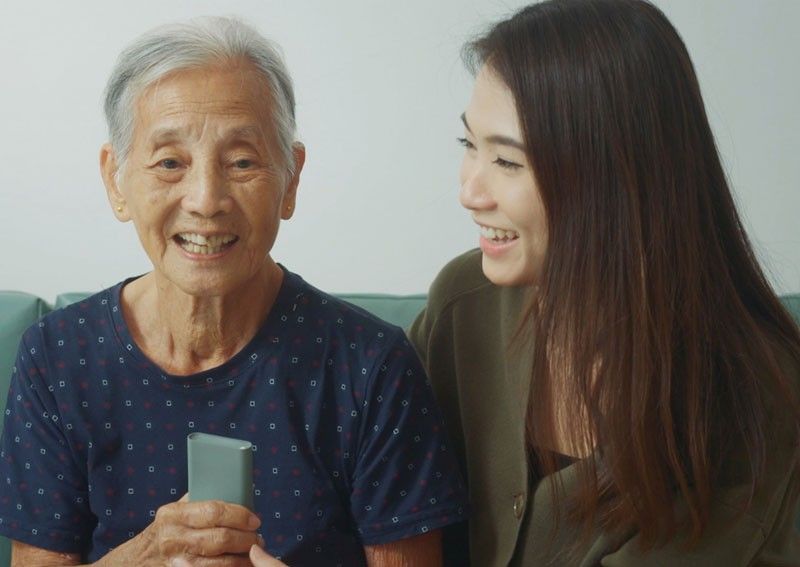Big ideas come from young minds

Design is destiny, in a way. It’s how we adapt and take control in a rapidly changing world.
Since 2013, the Lexus Design Awards (LDA) has brought together key judges and mentors to help shape the ideas of young student and graduate inventors into world-changing breakthroughs. Big ideas, carried out by young minds.
This year’s six finalists embraced the theme “Design for a better tomorrow,” and, as always, drew on the three key principles of the Lexus brand (“Anticipate, Innovate, and Captivate”) in realizing their inventions, which ranged from Styrofoam made from plastic-eating mealworm exoskeletons to an arty wall hanging that cancels outside urban noise by 20 percent.
And, as always, one invention made the final cut. That was Rewind, a multisensory learning platform that helps dementia patients draw on memories to aid in completing daily tasks.
The device by Sinpapore-based product designer Poh Yun Ru uses a motion-tracking tool that leverages multi-sensory stimulation to trigger meaningful recollections. Yun Ru’s invention was chosen for its innovative design and humanized approach to technology executed in an elegant and captivating manner.
Rewind gained the highest praise from judges at the Grand Prix finals held live last April 8. “I was touched by how she was able to use advanced technology that was already available to all, to make life better and easier for people that are disadvantaged,” noted judge Paola Antonelli.

Yun Ru and other finalists were invited to join the LDA mentorship — in which each is given professional guidance from various design fields and up to US$25,000 to shape their inventions into workable prototypes. The six finalists' projects will be shown at Lexus exhibit during Milan Design Week 2022, the world's largest design event, to be held this June.
For the 2022 edition, Beijing-based architect Yosuke Hayano and France- and Portugal-based designer Sam Baron joined designer Joe Doucet, in his third year as mentor, and designer Sabine Marcelis, a dedicated mentor from the previous year.
This year’s judges were Paola Antonelli, senior curator at MoMA’s Department of Architecture and Design in New York City; Anupama Kundoo, architect/founder of Anupama Kundoo Architects; Bruce Mau, co-founder and CEO of Massive Change Network; and Simon Humphries, head of Toyota & Lexus Global Design.
In her YouTube video, Grand Prix winner Yun Ru recalled spending time with her grandmother who experienced dementia: going through photo albums and preparing favorite food recipes with her was a “powerful tool” for eliciting memories, she found. Her invention comes from asking, “How do we embody memory?” Is it just from images or words? Yun Ru believed that familiar activities can stimulate more enduring memories, and that familiar tasks have a power to reinforce memory in dementia patients.
Her invention is a handheld device with a motion-tracking tool that links to images of activities shown on a computer tablet. The patient’s movements mimic physical tasks — whether buttering bread, pouring liquid into glasses, or sweeping up table crumbs — help complete tasks on the screen. This creates a mental link that reinforces memory through each completed motion. She designed a soft, contoured, tactile object (shaped somewhat like a small plastic bottle) that can be used to simulate a wide range of daily activities.
A product designer who lives in a culturally rich and diverse society, Yun Ru sees design as a way to develop intuitive and inclusive solutions for people from all walks of life. She admits the time researching her project was “emotionally draining.” “This experience was surely an eye-opener and a profound realization of the importance of human interaction,” she told the judges.
Yun Ru envisions Rewind as an “open source project” that can incorporate activities and tasks from around the world to fit a plethora of scenarios.
The Lexus judges were especially impressed by the versatility and inclusivity of her design solution. As judge Humphries said during the Zoom meet-up with finalists, “We were won over by your taking on an incredibly important problem, and your elegant solution.”
Antonelli added, “You all showed us where design can go in the future and taught us a lot.”
Judges Anupama and Mau praised the “integrity” of her design, from the invisible elements inside to its outer aesthetic — it sort of resembles a soft Wii wand, allowing the elderly to wave and match actions on a screen — and asked about her research. Yun Ru cited studies on “the integration of gestures or actions and also visual stimuli to allow the patients or the elderly to recall better.”

Antonelli asked if her device could allow a switch to actual physical objects to encourage seniors to repeat activities in real life, but Poh says early research found this approach to be a bit overwhelming for dementia patients; for now, Rewind relies on sparking neuroplasticity through remembered actions.
Of course, all of the finalists’ inventions had something special to offer.
• Chitofoam, developed by Pratt Institute Industrial Design master’s students Charlotte Böhning and Mary Lempres, took on a key LDA challenge (“Anticipate”) to design a method to reduce the planet’s growing plastics overload. “The solution was under our feet,” they explained. “Mealworms can safely break down soft plastics” through a process called biodigestion. These edible worms can break down a Styrofoam cup in one week, something that would take 500 years in a waste site. So the designers came up with Chitofoam, made from the edible, compostable exoskeletons of mealworms. It’s part of a closed-loop solution that also envisions vast “Chitofarms” to make plastic recycling local and help provide sustainable livelihood.
• Ina Vibe is a sustainable cooking, charging and lighting product developed by Nigeria’s Team Dunamis (Obasogie Okpamen, Obasogie Osasumwen, Anastacia Amadi, Uwague Aizeyosabo and Omolehin Emmanuel). The engineering graduates of Landmark University and Rivers State University designed an insulated solar cooker (housed in a cane-braided basket design) that provides heat for cooking while also storing the heat as energy that can be used for lighting and charging electronic devices. The device combines traditional African design solutions with Western technology in an innovative way.
• Malaysia’s medical innovation company Wondaleaf (Alex Wong, Reuben Tang, Louis Tang, Wong Ping Ming, John Tang, Lau Yien Yien and Sii How Sing) developed the Hammock Wheelchair to address a growing problem in nursing homes: how can we make the repeated transfer of so many patients more effortless? Their device uses a forklift principle with a flexible matting material that, when inserted beneath the patient, allows a crank-operated (or electrical) transfer of patients in and out of beds, cars or other environments. This reduces repetitive back strain among caregivers.
• Russian designers Kristina Loginova and Shamil Sahabiev developed Sound Eclipse as a noise-cancelling device to reduce outside urban sounds by 10 decibels when placed near an open window. Citing data that city noise leads to stress and possible increase of Alzheimer’s risk, they envisioned the circular device that hangs from windows as something that will become as ubiquitous as air purifiers in apartments, using noise-interference algorithms that can mask outside city noise at low frequencies.
• Japanese mechanical engineering doctoral student Kou Mikuni developed Tacomotive as a tangible experience simulator for children with visual and aural challenges. Using tactile materials (paper with various cutout patterns), Kou envisioned his invention as a subtler version of “felt” picture books that can help visually-challenged people learn to read or connect with their environment.
As always, the inventors worked through the mentorship process, adapting their designs when some goals couldn’t be reached. “It taught us to be present in the design process instead of being tied to the initial idea,” said Charlotte and Mary. “We gained a lot more confidence from what worked well, and also from failing. Being students, it was an incredibly validating, encouraging experience.”
Yun Ru noted the value of working with professionals from other fields: “Sometimes we’re trapped in our fields, but here the people were very professional, and the collaborative part I’m very grateful for.”
Lexus Global Marketing general manager Brian Bolain had some final words: “As always, I’m very impressed with our finalists. Lexus created the annual design awards in recognition of the power that design has to bring people together towards a better, bigger, shared vision, and I think that's what's always been important to our brand.”
Perhaps our destiny, in the right hands, can be designed more sustainably after all.
* * *
For more information, visit LexusDesignAward.com.



















